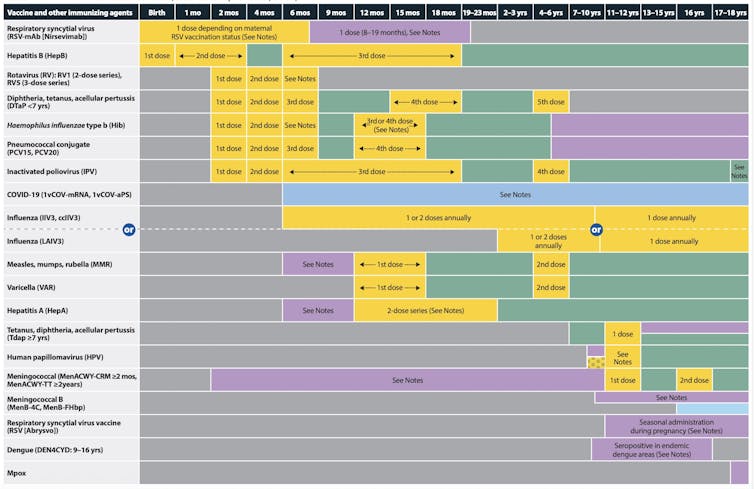"Fixing" what's not broken with a sledge hammer
 |
| We now have vaccines for many diseases that once ravaged the population. That's not a problem, but a cause for celebration. |
The U.S. childhood immunization schedule, the grid of colored bars pediatricians share with parents, recommends a set of vaccines given from birth through adolescence to prevent a range of serious infections. The basic structure has been in place since 1995, when federal health officials and medical organizations first issued a unified national standard, though new vaccines have been added regularly as science advanced.
Vaccines on the childhood schedule have been tested in controlled trials involving millions of participants, and they are continuously monitored for safety after being rolled out. The schedule represents the accumulated knowledge of decades of research. It has made the diseases it targets so rare that many parents have never seen them.
But the schedule is now under scrutiny.
On Dec. 16, 2025, the Centers for Disease Control and Prevention adopted its first major change to the childhood immunization schedule, under Kennedy’s leadership. The agency accepted an advisory committee’s vote to drop a long-held recommendation that all newborns be vaccinated against hepatitis B, despite no new evidence that questions the vaccine’s long-standing safety record.
Health and Human Services Secretary Robert F. Kennedy Jr., who has cast doubt on vaccine safety for decades, has said he plans to further scrutinize the vaccines children receive.
I’m an infectious disease physician who treats vaccine-preventable diseases and reviews the clinical trial evidence behind immunization recommendations. The vaccine schedule wasn’t designed in a single stroke. It was built gradually over decades, shaped by disease outbreaks, technological breakthroughs and hard-won lessons about reducing childhood illness and death.
With federal officials now casting doubt on its foundations, it’s helpful to know how it came about.
The early years
For the first half of the 20th century, smallpox vaccination was common, required by most states for school entry. But there was no unified national schedule. The combination vaccine against diphtheria, tetanus and pertussis, known as the DTP vaccine, emerged in 1948, and the Salk polio vaccine arrived in 1955, but recommendations for when and how to give them varied by state, by physician and even by neighborhood.
















.webp)






























